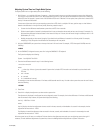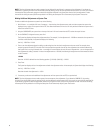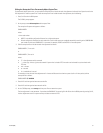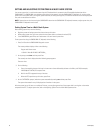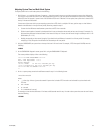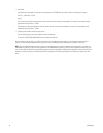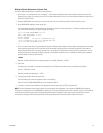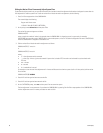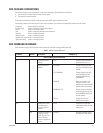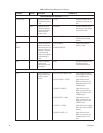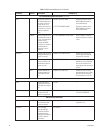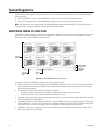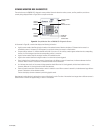
C1572M (9/05) 67
DOS FILENAME CONVENTIONS
The naming convention for a DOS filename is a root name followed by a period followed by an extension:
• The root name is limited to eight characters with no spaces.
• The extension is three characters.
For example, if the filename is NODE1.CAM, the root name is NODE1 and the extension is CAM.
The following characters cannot be used in the root name or extension. The characters are reserved for particular uses as follows:
\ (backslash) Used for directory navigation
/ (forward slash) Used as a delimiter in command line options
: (colon) Used for a command prompt
. (dot) Used as a separator between root and extension
* (asterisk) Used as a wildcard character
? (question mark) Used as a wildcard character
> (greater than symbol) Used as a command prompt
< (less than symbol) Used as a command prompt
DOS COMMAND REFERENCE
Table I provides a listing of DOS commands that are commonly used when managing 9760 system files.
Table I. DOS Command Reference
Command
†
Switch
††
Description Example(s)
§
¶
Directory Management Commands
CD Displays the current
directory.
C:\>CD Displays the root directory as
the current directory: C:\>
Changes the current
directory.
C:\>CD 9700 Changes from the root direc-
tory (C:\) to the 9700 directory:
C:\9700>
C:\>CD 9700\BKUP Changes from the root direc-
tory to the BKUP directory
within the 9700 directory:
C:\9700\BKUP>
C:\9700>CD.. Moves up one level in the
directory structure. In the
example, moves from the 9700
directory to the root directory.
C:\9700\BKUP>CD\ Changes to the root directory.
In the example, changes from
the C:\9700\BKUP directory to
the root directory.
C:\>CD A: Changes from the root
directory to the A drive.
DIR Displays a list of files
and subdirectories
within the specified
directory.
C:\>DIR Displays a list of files and
subdirectories within the root
directory (C:\).
/W Displays the contents of
a directory in wide
format. Up to five file-
names or directory
names are displayed on
one line.
C:\>DIR/W Displays the contents of the
root directory in wide format.



